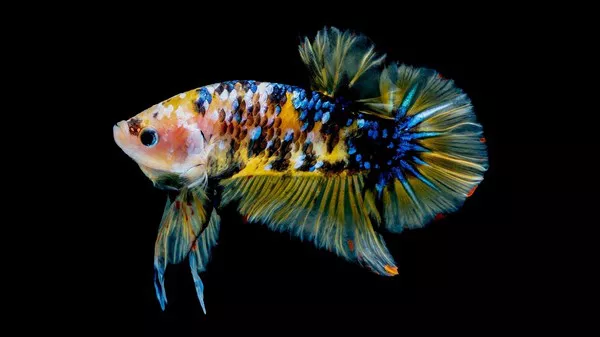Angelfish are stunning and graceful freshwater aquarium fish known for their unique shape and vibrant colors. They are a favorite among aquarists due to their captivating beauty and peaceful temperament. However, not all angelfish species are the same size. In this article, we will explore the smallest angelfish species commonly kept in aquariums, their unique characteristics, care requirements, and tips for providing them with a suitable environment to thrive.
The Dwarf Angelfish – The Smallest of the Angels:
The smallest angelfish species commonly found in the aquarium trade is the Dwarf Angelfish (Centropyge sp.). These beautiful fish are part of the family Pomacanthidae and come in various color patterns and species. They are cherished for their vibrant hues, engaging personalities, and relatively small size, making them suitable for smaller aquarium setups.
Popular Dwarf Angelfish Species:
Some of the most popular dwarf angelfish species among hobbyists include the Flame Angelfish (Centropyge loriculus), the Coral Beauty Angelfish (Centropyge bispinosa), the Lemonpeel Angelfish (Centropyge flavissima), and the Cherub Angelfish (Centropyge argi). Each of these species has unique color patterns and characteristics that make them highly sought after by aquarists.
Size and Appearance:
Dwarf angelfish species generally range in size from 3 to 4 inches (7.5 to 10 cm) in length. While they may be small compared to their larger angelfish relatives, their striking colors and fin shapes make them a captivating addition to any aquarium.
Care Requirements:
Caring for dwarf angelfish requires attention to their specific needs. These fish thrive in well-maintained aquariums with stable water parameters. The tank should be appropriately sized, providing ample swimming space and hiding spots with live rock or coral decorations. Dwarf angelfish are reef safe in most cases, but caution should be exercised as some individuals may nip at corals and invertebrates.
Tank Compatibility:
Dwarf angelfish are generally peaceful towards other fish but may display territorial behavior towards their own species. It is best to keep them in pairs or as the sole angelfish in the tank. Compatible tankmates include other peaceful community fish, but aggressive or predatory species should be avoided.
Feeding Habits:
Dwarf angelfish are omnivores, meaning they eat a mix of both plant matter and small animals. Provide them with a varied diet that includes high-quality flake or pellet food, frozen foods such as brine shrimp and mysis shrimp, and occasional fresh vegetables to supplement their nutritional needs.
Water Quality and Filtration:
Maintaining pristine water conditions is essential for the health and well-being of dwarf angelfish. Regular water changes, proper filtration, and monitoring of water parameters, including temperature, pH, ammonia, nitrite, and nitrate levels, are critical to their overall health.
Behavior and Temperament:
Dwarf angelfish are generally peaceful and curious fish, making them delightful additions to a community aquarium. However, individual temperaments may vary, and some may exhibit territorial behavior, especially when first introduced to a new environment. Be observant and ensure adequate hiding spots to reduce stress during the acclimation process.
Breeding and Reproduction:
Breeding dwarf angelfish in a home aquarium can be challenging due to their specific requirements and territorial behaviors. It is best left to experienced breeders with dedicated breeding setups and a thorough understanding of their reproductive behaviors.
Conclusion:
The Dwarf Angelfish, with its vibrant colors and modest size, is a popular choice for aquarists looking to add beauty and charm to their home aquariums. These captivating fish have unique personalities and can be easily accommodated in smaller setups. To ensure their well-being and longevity, providing a suitable environment with proper water quality, tankmates, and a varied diet is essential. With the right care, the smallest angelfish species will reward their owners with their captivating beauty and peaceful presence, bringing joy to aquarium enthusiasts for many years to come.
Recommended reading:


























